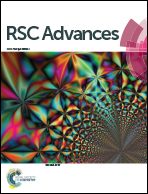Comparative study of the extrinsic properties of poly(lactic acid)-based biocomposites filled with talc versus sustainable biocarbon†
Abstract
This study investigates the effects talc and two sizes of biocarbon have as fillers in a PLA bioplastic, when considering them for durable composite applications. Analysis of the PLA-based biocomposites' resistance to wear and flammability accompanied by the vapor barrier characteristics were conducted, with subsequent rheological and thermal properties to further explain the observed results. The compression molded sheets showed a reduction in abrasion by greater than 69% for either filler type compared to the neat PLA due to their high stiffness. In contrast, only the talc provided barrier properties that hindered both water and oxygen permeability, while biocarbon did not possess a high aspect ratio to form a tortuous path necessary for barrier improvement. Yet, the biocarbon-filled PLA biocomposites provided superior flammability resistance due to its char-like caricature that superseded the neat PLA and talc variant which both failed the horizontal burning test. The rheology of the composites provided evidence in the degradation of the PLA chains from the presence of the biocarbon that did not occur with the talc, which may have also contributed to the lower barrier and higher burn resistance from increased dripping. Thus, both talc and biocarbon have their own potential applicability when it comes to acting as a barrier enhancer or flammability retardant due to their intrinsic nature, but both possess wear reinforcement for focus in the tribological area.



 Please wait while we load your content...
Please wait while we load your content...